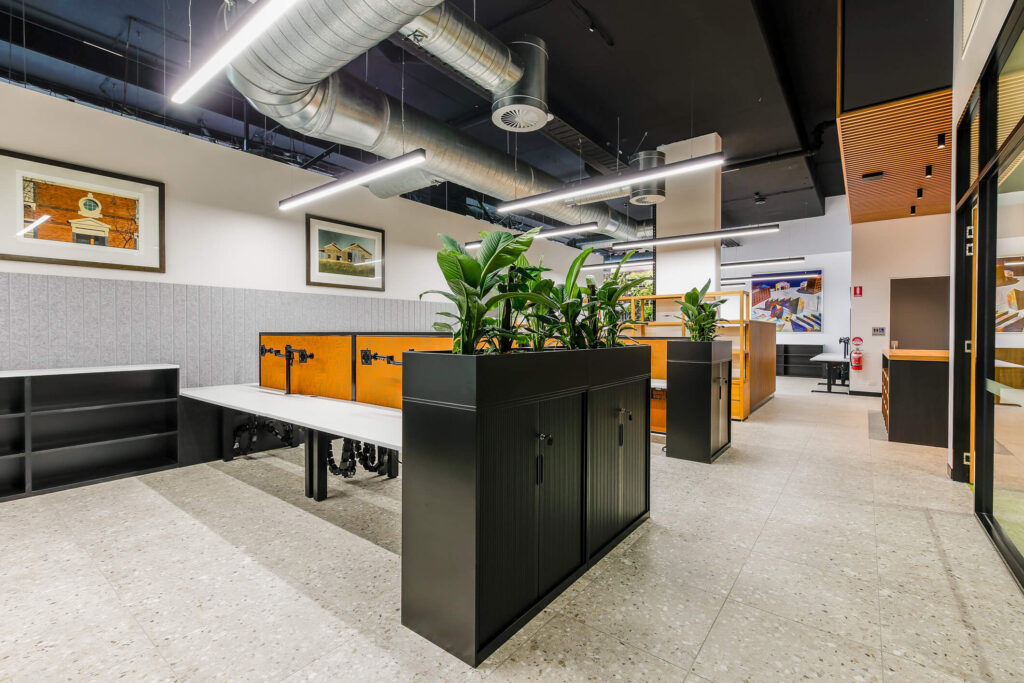Office fitouts can be an effective way to create a more productive and functional workspace that meets the specific requirements of a business. By tailoring an office space to meet the needs of the employees and the organization, businesses can improve employee morale, reduce workplace stress, and increase productivity.
The process of an office fitout typically involves several stages, including an initial consultation and site visit to evaluate the space, planning and design, construction and installation, and final finishing and detailing. A professional office fitout company typically manages the entire process, from initial consultation to final installation.
Office fitouts can be costly due to several factors, including:
- Design and Planning: The initial design and planning phase of an office fitout can be time-consuming and require the expertise of architects, designers, and project managers. These professionals will evaluate the client’s needs, develop a plan, and create design specifications that meet the client’s requirements, which can add to the cost.
- Customization: Office fitouts melbourne are typically customized to the client’s specific requirements, which can be costly due to the need for bespoke features, materials, and finishes. The cost of customization can increase further if the client requires unique designs or features that are not readily available.
- Construction and Installation: The construction and installation phase of an office fitout can be complex and require specialized tradespeople, such as carpenters, electricians, and plumbers. These tradespeople must work together to install and connect various components, such as walls, flooring, lighting, and HVAC systems, which can be time-consuming and labor-intensive, adding to the cost.
- Materials and Finishes: Office fitouts often require high-quality materials and finishes, such as natural stone, hardwood, and glass, which can be expensive. The cost of these materials can be further increased if they must be custom-made or imported from overseas.
- Equipment and Furniture: An office fitout often includes the installation of new equipment and furniture, such as workstations, chairs, and storage units. These items can be costly, especially if the client requires high-end or customized options.
- Compliance and Regulations: An office fitout must meet building and safety codes, which can add to the cost. Compliance with these regulations can involve the need for special permits, inspections, and specialized equipment, such as fire suppression systems.
In conclusion, office fitouts can be costly due to the need for customization, design, planning, and the use of high-quality materials, equipment, and furniture. The cost of an office fitout can vary depending on the client’s requirements, the size of the space, and the level of customization and finishes. However, a well-executed office fitout can be a worthwhile investment that enhances productivity, collaboration, and employee satisfaction.
How Can You Save Money on Your Next Office Fitout?
Office fitouts can be a significant investment for any business. However, there are ways to save money on your next office fitout without compromising on quality or functionality. Here are some tips to help you save money on your next office fitout:
- Set a Budget: Determine your budget before starting the office fitout project, and stick to it. Be clear about what you can afford, and focus on the essentials to avoid overspending.
- Plan Ahead: Proper planning can help save costs. Work closely with your design team and ensure that the office fitout plans meet your requirements and budget. Making changes after construction has started can be costly.
- Choose the Right Contractor: Look for a contractor that offers competitive pricing without sacrificing quality. Get multiple quotes and compare the services and materials they provide. Also, consider a contractor that offers a fixed-price contract to avoid unexpected costs.
- Optimize Space Utilization: Maximize the use of the available space in your office. Consider using open-plan designs, shared workspaces, and flexible furniture to make the most of the available space. This approach can save on the cost of constructing extra walls, which can be expensive.
- Buy Used or Refurbished Furniture: Consider buying used or refurbished furniture to save costs. Used furniture can be significantly cheaper than new furniture and can be refurbished to meet your specific needs. There are many used furniture vendors and online marketplaces that offer high-quality used furniture at a fraction of the cost.
- Choose Cost-Effective Materials: Consider using cost-effective materials, such as vinyl flooring or laminated benchtops, to save on the cost of expensive natural materials. Ensure that the materials you choose are durable and meet your functional and aesthetic requirements.
- Be Energy Efficient: Incorporate energy-efficient lighting and HVAC systems in your office fitout to reduce energy costs in the long run. Use LED lights and install efficient heating and cooling systems that can reduce your electricity consumption and save on your bills.
In conclusion, an office fitout can be a significant investment for any business. However, by following these tips, you can save money on your next office fitout without compromising on quality or functionality. Proper planning, optimization of space utilization, and cost-effective materials can significantly reduce the overall cost of an office fitout.

